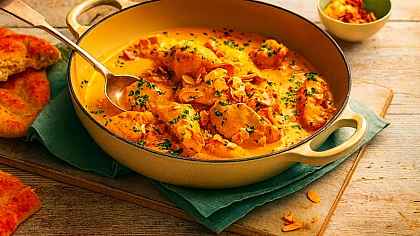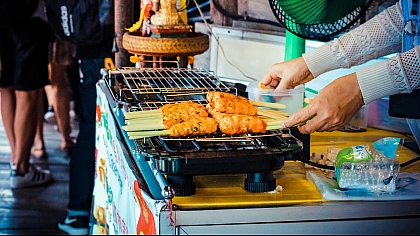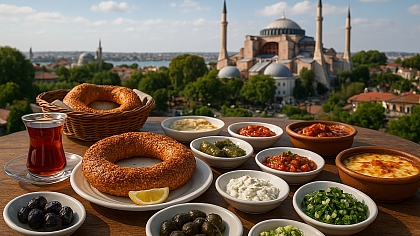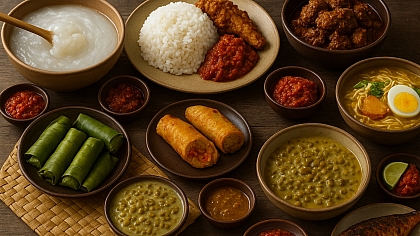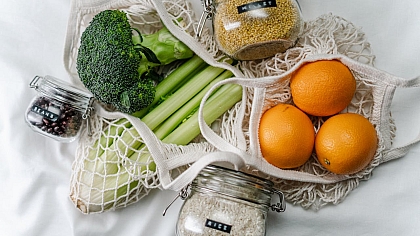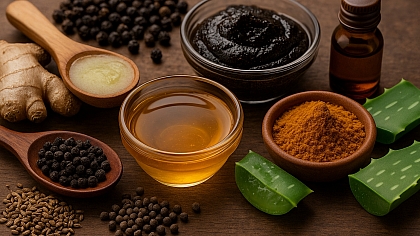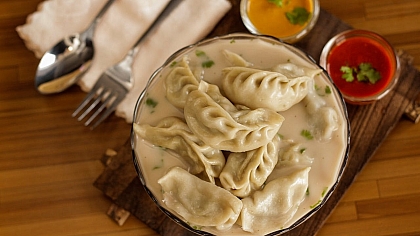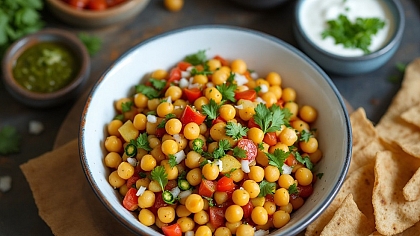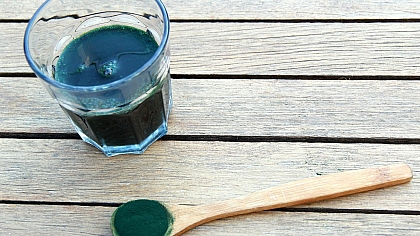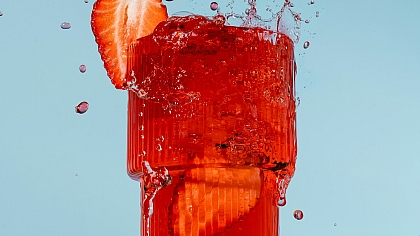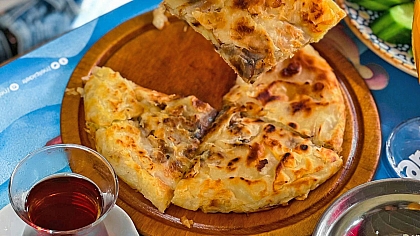
Cleaning Tips for Middle Eastern and South Asian Cookware
What You Will Learn
This guide explains the best ways to care for special cookware. You will find out:
- Why some pots turn black and how to fix it.
- The safest way to clean brass and copper.
- How to make a non-stick surface on a karahi.
- What not to do with your cast-iron skillet.
- Easy steps to remove tough, burnt-on food.
The Right Way to Clean Your Favorite Pots and Pans
Cooking brings people together. The meals made in a heavy-bottomed pot or a wide pan taste amazing. But cleaning these pots can feel hard. Sticky food, dark stains, and dull metal are common problems. You do not need strong chemicals or to scrub for hours. With a few simple items from your kitchen, you can make your cookware look new again.
This guide shares easy cleaning tips for Middle Eastern and South Asian cookware. We cover everything from brass pots to carbon steel karahis.
Understanding Your Cookware
Different metals need different care. Using the wrong method can damage your pot forever.
- Brass and Copper: These metals look beautiful. They change color over time because of air and water. This is called tarnishing. You need a gentle cleaner to make them shiny again without scratches.
- Carbon Steel (Karahi/Tadka Pan): This metal is light and gets very hot. It works best when it has a layer of cooked-on oil, called seasoning. This seasoning stops food from sticking. Harsh soap can remove this good layer.
- Cast Iron (Dosa Tawa): Like carbon steel, cast iron uses seasoning. It is very strong but can rust if left wet.
- Stainless Steel: This metal is strong and does not rust easily. Burnt food can stick to it very hard. It needs a strong method to lift off the food.
Your Kitchen Cleaning Kit
You do not need to buy special products. These natural items work very well:
- Baking Soda
- White Vinegar or Lemon Juice
- Salt
- Tamarind Paste
- Cream of Tartar (a powder used in baking)
- Mild Dish Soap
- Soft Sponges and Microfiber Cloths
How to Clean Specific Types of Cookware
1. Cleaning a Carbon Steel Karahi or Wok
A new karahi often has a factory coating that you must remove first.
First, wash the new karahi:
- Use hot, soapy water and a sponge to scrub the entire pan. This removes the waxy coating.
- Dry it completely over low heat on the stove.
Now, season the karahi (this is very important):
- Heat the dry karahi on the stove over medium heat.
- Add a thin layer of oil with a high smoke point. Sunflower oil or grapeseed oil work well.
- Use a paper towel to wipe the oil all over the inside of the pan.
- Let the pan heat up until the oil starts to smoke. Then, turn off the heat.
- Let it cool down completely.
- Wipe out any extra oil with a paper towel. Your pan will look a little darker. This is the non-stick seasoning layer.
After cooking, clean your karahi this way:
- Rinse it with hot water while it is still a little warm.
- Use a soft brush or sponge to remove any food bits. Avoid soap if you can.
- If food is stuck, put a little water in the pan and boil it for a few minutes. The stuck food will loosen.
- Always dry the karahi on the stove over low heat. Then, wipe a tiny, tiny amount of oil inside to protect it.
2. Making Brass and Copper Shine
Tarnished brass and copper pots can look new again with a simple paste.
Lemon Juice (or Vinegar) and Salt Method:
- Cut a lemon in half and put some salt on the cut side.
- Rub the lemon all over the pot. The acid from the lemon and the salt work together to remove the tarnish.
- For tougher jobs, make a paste with lemon juice and salt. Leave it on the pot for 5-10 minutes before rubbing.
- Rinse with warm water and dry immediately with a soft cloth.
Tamarind Paste Method:
- Mix tamarind paste with a little warm water to make a thin paste.
- Spread it over the brass or copper and let it sit for 15 minutes.
- The tamarind acid will eat away the tarnish. Rinse well and dry.
3. Caring for Your Cast Iron Tawa or Skillet
The number one rule for cast iron is: keep it dry.
- After cooking, let the pan cool slightly. Scrape out any food.
- Clean it by scrubbing with coarse salt and a paper towel. The salt acts as a gentle scrubber that absorbs oil and food.
- If you need to use water, use a very small amount. Dry the pan immediately over low heat on the stove.
- Once dry, wipe a very light coat of oil inside the pan to keep it from rusting.
4. Tackling Burnt Food on Stainless Steel
Burnt-on dal or rice does not stand a chance against this method.
The Boiling Water Method:
- Put the pot on the stove and add water. Enough to cover the burnt area.
- Add a few spoonfuls of baking soda.
- Bring the water to a boil, then let it simmer for 10-15 minutes.
- Turn off the heat and let it sit. The burnt food will lift from the bottom.
- Once cool, you can easily wipe the pot clean.
A Quick Guide to Cleaning Methods
| Cookware Type | Common Problem | Best Cleaning Method |
|---|---|---|
| Carbon Steel Karahi | Sticky food, rust | Hot water, soft brush, re-season with oil |
| Brass & Copper | Tarnish, dark spots | Lemon juice & salt paste, tamarind paste |
| Cast Iron Tawa | Stuck food, rust | Coarse salt scrub, light oiling, avoid soap |
| Stainless Steel | Burnt, stuck-on food | Boil water with baking soda to loosen |
Keep Your Cookware Looking Great
- Always let your pots and pans cool down a bit before you wash them. Putting a very hot pan in cold water can make it warp and change shape.
- Dry your cookware completely before you put it away. This is the best way to stop rust from forming.
- For seasoned pans like karahis and tawas, a little bit of oil after drying keeps them in perfect condition.
Caring for Your Clay Pot: A Guide to Tagines and Traditional Cookware
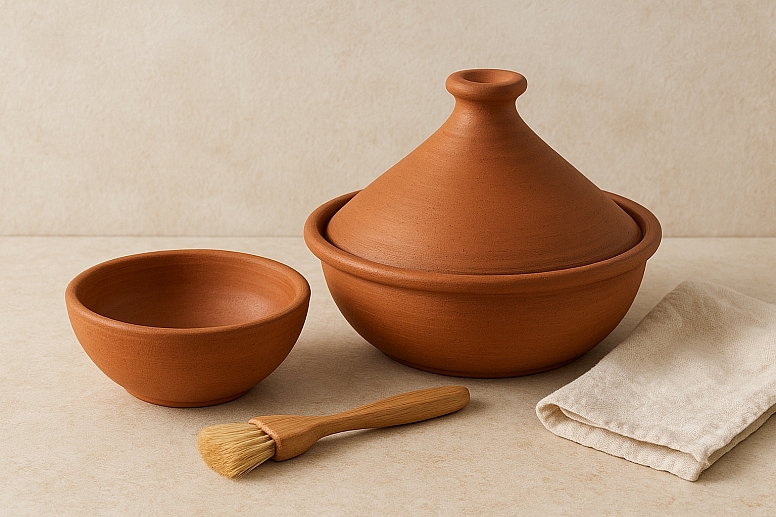
Clay pots, like tagines and traditional cooking vessels, require gentle but specific care to maintain their integrity and cooking properties. Unlike metal cookware, you should never use soap or harsh abrasives on unglazed clay, as the porous material will absorb the chemicals and flavors, ruining future dishes. To clean a clay pot, simply use hot water and a stiff-bristle brush or a handful of coarse salt as a gentle abrasive to scrub away any food residue.
After washing, it is crucial to allow the pot to air-dry completely before storing it to prevent any mold from forming. With proper care, the pot will develop a richer patina over time, which only enhances the flavor of the food cooked in it.
Your Pot-Washing Questions, Answered
Can I use steel wool on my copper pot? It is not a good idea. Steel wool is very rough and will leave scratches. A soft sponge or cloth with a lemon and salt paste is a much better choice.
My karahi has rust spots. Did I ruin it? No, you can fix it. Scrub the rust off with a brush or a little vinegar. Then, wash, dry, and re-season the pan with oil. It will be good as new.
Why shouldn't I use soap on my cast-iron or carbon steel pan? Strong soap can strip away the thin layer of seasoning that you worked hard to build. This seasoning makes the pan non-stick. A little mild soap is okay sometimes, but try to avoid it.
How do I get rid of strong spice smells in my pot? Make a paste of baking soda and water. Rub it all over the inside of the pot and let it sit for an hour. Then, wash it out. The baking soda will absorb the smells.
Give Your Pans a New Life
Your cookware helps you make delicious food for your family. Taking good care of it means it will last for many years. These simple, natural methods are safe for your pots and for you. Try one of these tips the next time you clean your kitchen. You might be surprised by how easy it is.

